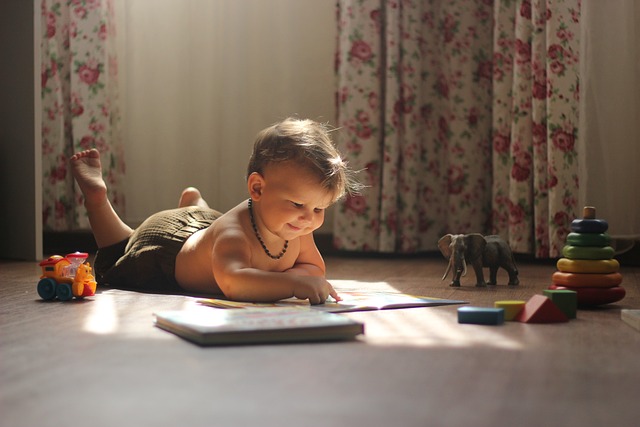Baby books also fulfill an important role in a child’s early development, providing entertainment through which to learn about the world and to form bonds with caregivers. In this guide, we’ll discuss baby books benefits of baby books, different kinds of baby books, and the best baby books for the first year, second year, and beyond toddlerage! If you know a new parent, caregiver or other parental figure, friend or relative who wants the perfect gift to foster a child’s love of reading, this guide will give you a place to start making informed choices.
Why Are Baby Books Important?
Baby books aren’t just about lines and colours. They expose babies, for example, to sounds, color, the structure of language. Reading to a baby helps their listening, their memory and their vocabulary, and gives them a head start on literacy skills. Its also good for causing a very strong emotional connection between caregivers and babies, making babies feel comfortable and loved.

Types of Baby Books
Learning about baby books and which types are appropriate give you a sense for what will be developmentally and engagingly. Here are some of the main types:
1. Board Books
- Description: Board books are printed thick durable pages, these pages should be able to be held and turned by babies. They are tough enough to survive biting, drooling, and a bit of rough handling.
- Age Range: Usually for babies 0–3 years.
2. Interactive Books
- Description: Features in these books include, for example, lift the flap, touch and feel or pop up. These books are baby friendly and babies can touch, lift, or move parts of the pages.
- Age Range: Suitable for ages 6 months and over.
3. Soft Cloth Books
- Description: Cloth books are made of fabric, so they’re soft and can be used safely by babies who are just getting to know their hands and mouths. Usually washable and durable.
- Age Range: It’s good for newborns to toddlers.
4. Touch-and-Feel Books
- Description: All of us can learn different textures through touch-and-feel books for infants that enable a baby to explore with their hand.
- Age Range: For use in babies three months and older.
5. Story Books
- Description: Often, story books include simple, interesting stories as well as colorful pictures. These stories can span from classic fairy tales to stories which help teach values.
- Age Range: Ages 1 and up, depending on complexity.
6. Educational Books
- Description: Teaching very basic things such as numbers, colors, shapes, and even animals, these books are great.
- Age Range: Toddlers 1 year and older.
Best Baby Books by Age Group
Smartly choosing age appropriate books is very helpful to keep your baby engaged and stimulated. Here are some of the top picks for each age group:
For Newborns (0–6 Months)
- “Look, Look!” by Peter Linenthal
- It’s ideal for creating vision of babies, with highly contrasting high differentiation delineations.
- “Child Contact and Feel: Creatures” by DK Distributing
- Containing textural features simple animal images that babies can touch.
For Babies (6–12 Months)
- “Where’s Spot?” by Eric Hill
- This a classic lift the flap book that motivates subsequent curiosity and involvement.
- “Peek-a-Who?” by Nina Laden
- The rhymes and pictures are colorful enough for little minds to engage with the text.
For Toddlers (12–24 Months)
- “Earthy colored Bear, Earthy colored Bear, What I See?” Composed by Bill Martin Jr and represented by Eric Carle
- With cadenced text and dynamic outlines this book helps language advancement.
- “Dear Zoo” by Rod Campbell
- This book offers flaps to lift and animals to find, and gives animal names and sounds.
For Older Toddlers (2–3 years)
- Margaret Wise Brown, (Goodnight Moon)
- Tinkering with little kids with its delicate rhymes.
- Eric Carle’s ‘The Exceptionally Eager Caterpillar
- A wonderfully outlined story that shows counting, days of the week and smart dieting.

Benefits of Reading to Babies
Reading to babies has numerous benefits, including:
1. Language Development
- Read books to babies and they will learn words and phrase sooner and start to develop language quicker.
2. Improved Cognitive Skills
- Stories help babies hear, and they listen back. They develop an understanding of patterns, predict results, and begin comparing.
3. Better Bonding Time
- One way parents or caregivers can still spend quality time with their baby, is by reading.
4. Builds Early Literacy Skills
- Language gives babies awareness of sounds, rhythm, and patterns that will help with reading.
5. Expands the children’s imagination and curiosity.
- Baby books help them to learn about new ideas, animals, places and objects, which excite imagination and curiosity.
What Baby Book you Select is Very Important
When choosing a baby book, consider the following factors to ensure it’s both engaging and age-appropriate:
1. Age Appropriateness
- Picking the right books – with the right content and interactivity – will depend on your child’s age. Simple, colorful images are preferred by younger babies, whereas toddlers like stories in simple, but not simple, books.
2. Durability
- Books tend to be rough on babies and toddlers. Board books, cloth books, or any sort that will stand up to biting, tugging, and drooling are always the best choice.
3. Interactive Elements
- Babies are engaged, feel, build their fine motor skills and develop with books that have textures, flaps and other interactive elements.
4. Illustrations
- High contrast illustrations, thus colorful, catch babies’ eyes and make reading fun.
5. Simple and Rhythmic Text
- They (babies) respond well to rhythm, rhyme and repetition. Find books that use simple, or even repeated, simple or rhyming words.
Tips for Reading to Babies
- Make it a Daily Routine: Read your baby everyday, preferably at some regular time, to form a comforting routine.
- Use Expression and Sound Effects: Change voices, expressions and sounds to make the story alive.
- Engage with the Pages: Look at the pictures, describe the things depicted on the pictures, touch the materials, and open the cut-out parts to engaging baby through interaction
- Follow Baby’s Lead: ReadingREFERENCE to your baby be put to a pause if the baby loses interest just pick up the book and read later when they are interested. They should be short and have a positive nature.
- Ask Questions: By the time your baby is older, interact with him/her using pictures about the book’s content in an attempt to get simple answers and thinking.
FAQs About Baby Books
1. To which age does the baby respond to being read to?
- You can read to your baby when she is as young as one month of age. And they can listen to your voice even if it is through a mobile or live from the womb, good for the bonding process and speech development even in the first days of life.
2. So How Many Pages Should I Read to My Baby Daily?
- Actual reading by the facilitator can range anywhere from 5-10 minutes per session. It is recommendable to do so by gradually raising the time as your baby matures although this depends on interest and focus span of the baby.
3. Can I be using normal books instead of baby or child books?
- As you might know, baby books are primarily meant to be fun and perfectly suitable for children to turn the pages. You will also find it easier to read normal books but it is advisable that you buy books that are for babies since they are strong and often come in bright colors, with simple text.
4. Some Good Bedtime Baby Books
- Goodnight Moon by Margaret Wise Brown, Guess How Much I Love You by Sam McBratney, The Going to Bed Book by Mercer Mayer, would be wonderful bedtime stories because their text and graphics are gentle.
5. How Do I Know If My Baby Cares For A Book?
- In Babies, interest is demonstrated by reaching for the book, babbling or looking at the pages of the book. In case your baby loses interest, you can put down the book, and use it at another time or even the following day.

Conclusion
Early childhood development is greatly aided by baby books that help develop speech and language, cognitive skills, as well as help develop a bonding with parents. When you pick age appropriate, interactive and durable books they are laying the groundwork for a lifetime of reading and learning. Thus going ahead pick a few from this guide as favourites and spend that priceless moment of reading with your little one.



